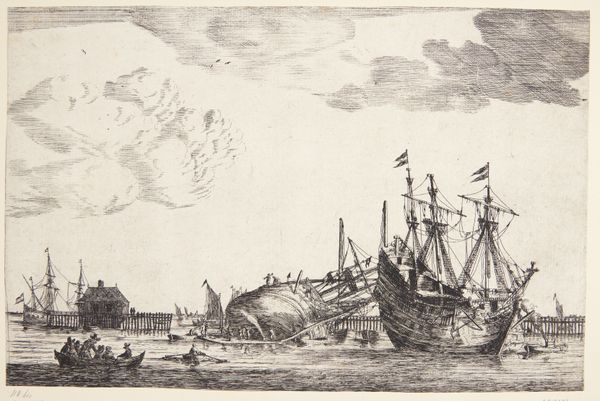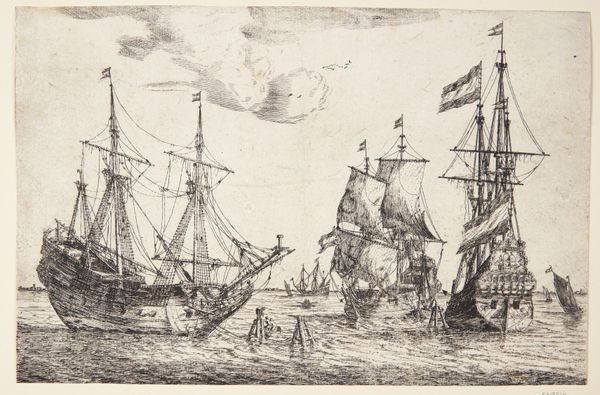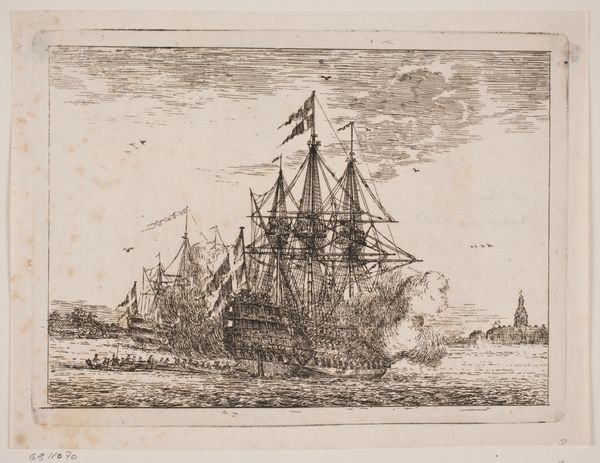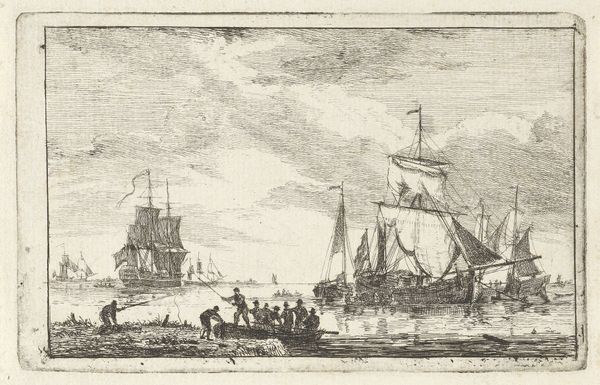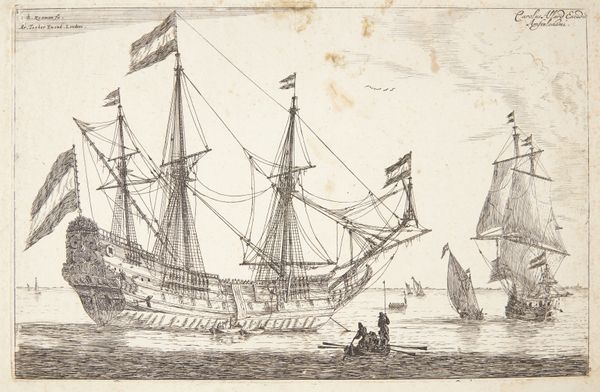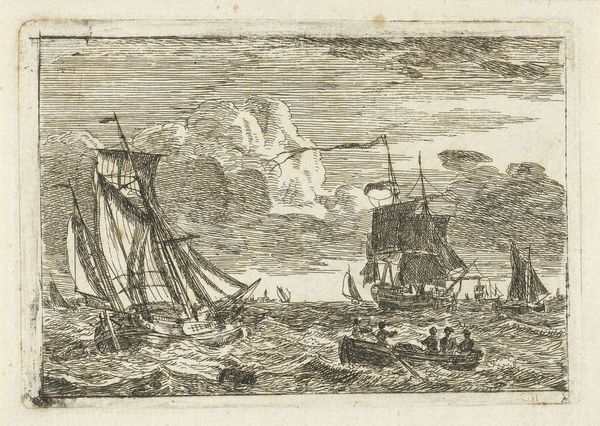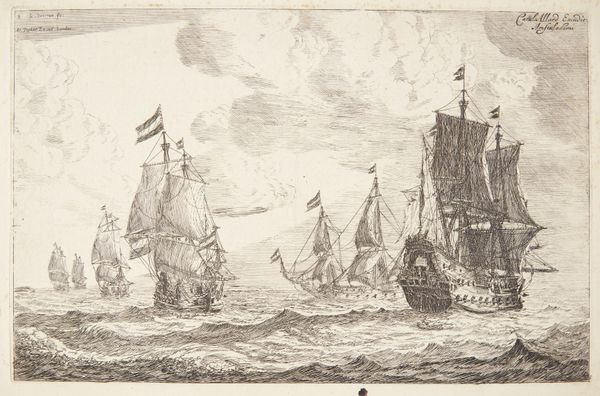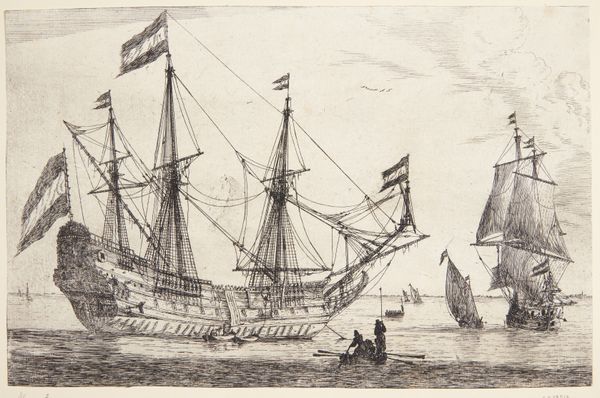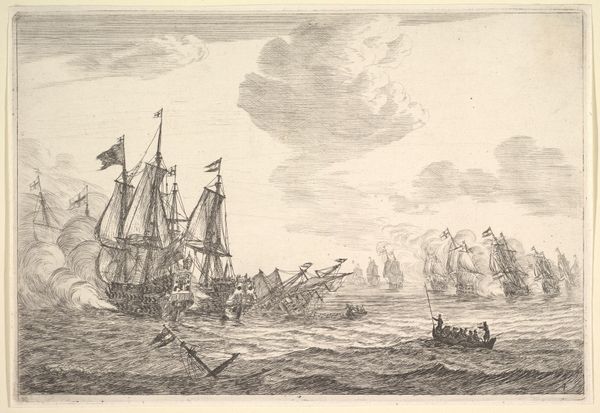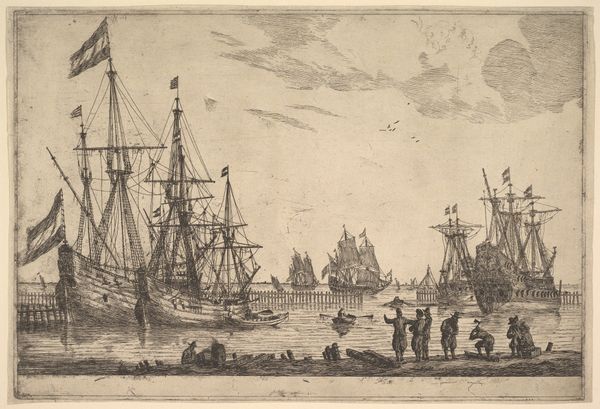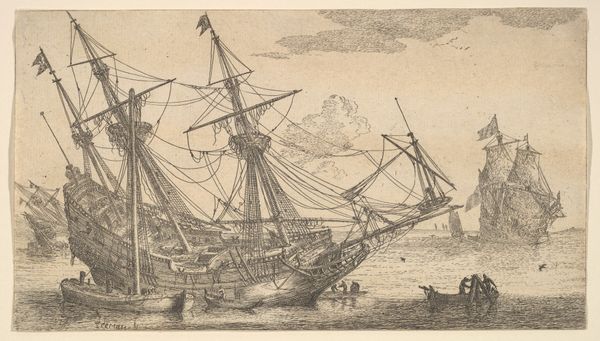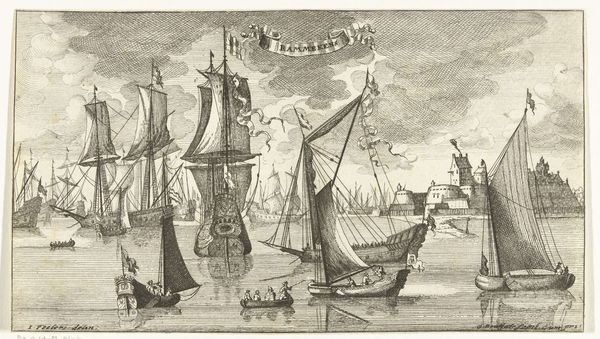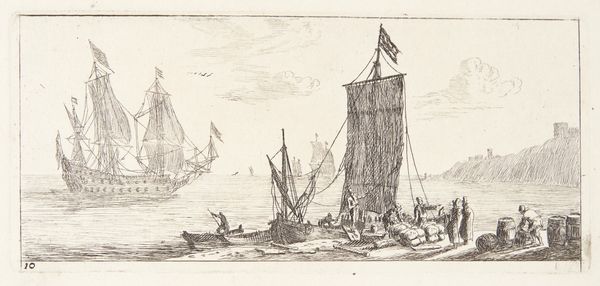
drawing, print, etching, ink
#
drawing
#
baroque
# print
#
pen sketch
#
etching
#
landscape
#
ink
Dimensions: 196 mm (height) x 298 mm (width) (plademaal)
Editor: So, this is "Two Ships Behind a Breakwater, one Keelhauling" by Reinier Nooms, made sometime between 1623 and 1664. It’s a print made with etching and ink. It's incredibly detailed, and there's a sort of mundane, working atmosphere despite the grandeur of the ships. What stands out to you when you look at this piece? Curator: The image pulls me toward a moment of brutal practicality embedded within the rise of global trade. The act of keelhauling, publicly dragging a person under the ship, served as violent spectacle as well as corporeal punishment. This ship becomes a stage. The cultural memory of this violence would carry specific meanings depending on one's perspective: ruler or ruled. How does the seemingly casual inclusion of such brutality affect your perception of Dutch maritime power at the time? Editor: I hadn't really thought about the violence of it, but now that you mention it, it definitely casts a shadow. I guess I was focused on the technical skill, the precision of the lines, and the bustling scene. There are so many tiny figures doing different things. Curator: And consider the etymology itself: keel-hauling. What image does that conjure for you beyond the immediate horror? A deep reckoning? Cleansing by ordeal? Baroque art frequently employs dramatic symbolism. Even seemingly mundane maritime scenes reflect the deep-seated societal norms and brutal power structures of the Dutch Golden Age. These ships, then, aren't just vessels of trade. They are vessels of state power, using symbolic actions to show it. Editor: That’s fascinating. So much is communicated beyond just a scene of ships in a harbor. It makes you wonder what other stories are hidden in plain sight within these seemingly straightforward landscapes. I’ll definitely look at art of this era with new eyes now. Curator: Indeed. And remembering that symbols carry cultural weight shifts and historical echoes depending on who is viewing and experiencing the artwork, it asks us to remain attentive to multiple realities simultaneously.
Comments
No comments
Be the first to comment and join the conversation on the ultimate creative platform.
